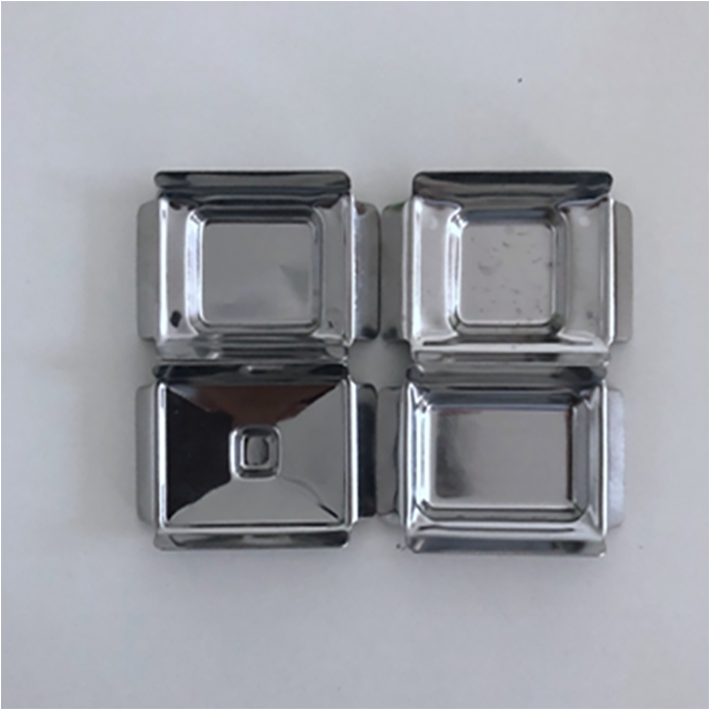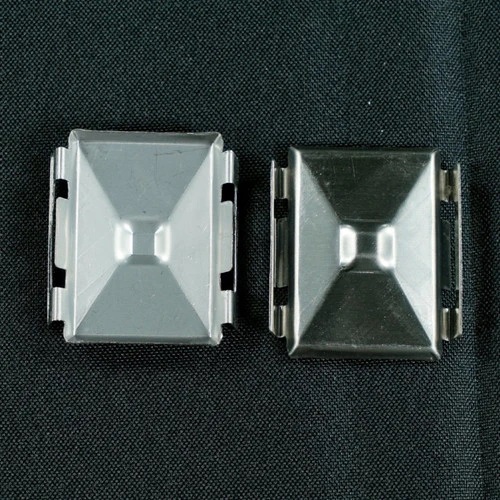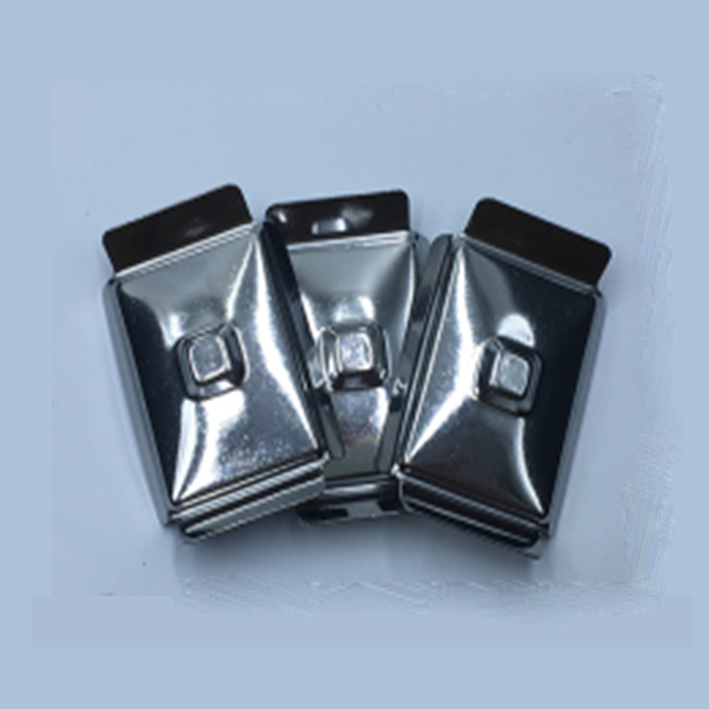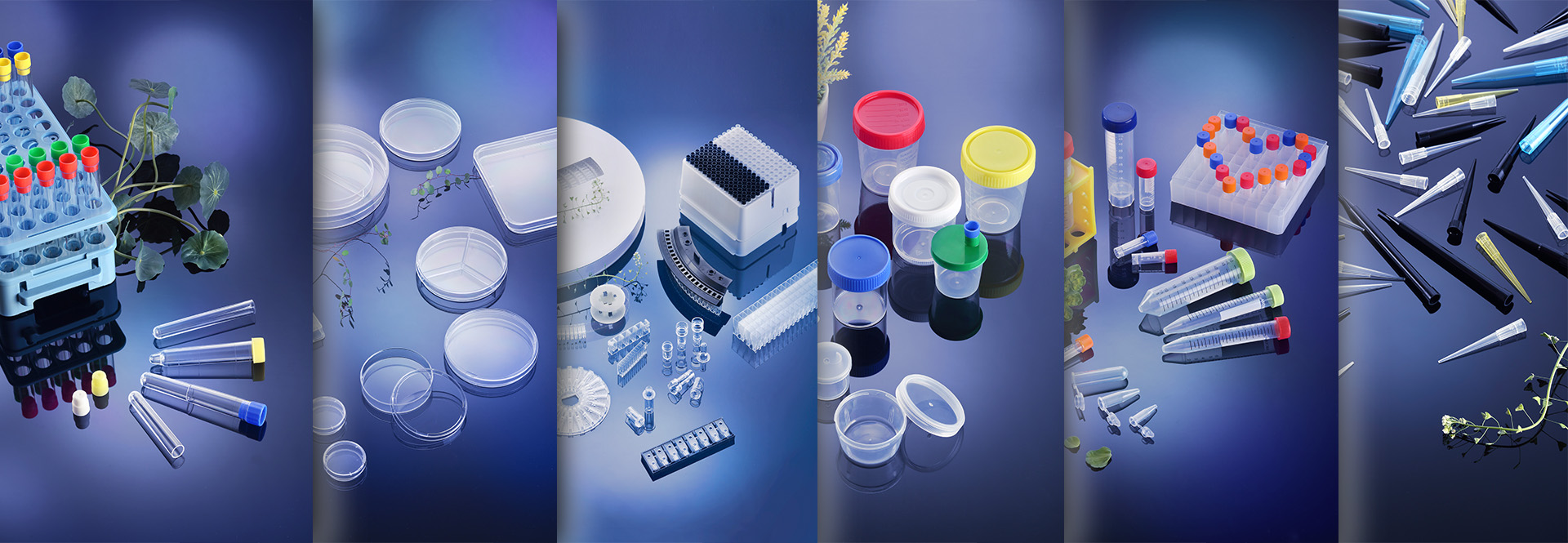Embedding bottom molds are essential tools in histology laboratories, enabling efficient and precise sample embedding for microscopic analysis. These molds offer hassle-free embedding by providing proper orientation and alignment of samples during the embedding process. With embedding bottom molds, researchers can ensure consistent and accurate results, enhancing the quality of histological studies. Discover the benefits of using embedding bottom molds for streamlining your sample preparation workflow and achieving optimal results in histopathology research.


| Product Name | Embedding Bottom Mold (Stainless Steel) | |||||||
| Size | 7*7mm/ 24*24mm/ 24*30mm/ 24*37mm | |||||||
| Material | Stainless steel | |||||||
| Application | For paraffin embedding fixation of tissue direction. | |||||||
| Packing | Carton box | |||||||
| Product Description | The stainless steel embedding bottom mod is used for paraffin embedding fixation of tissue direction, for various specifications. | |||||||
| Storage Condition | Room temperature | |||||||

| Product Features | ● Stainless steel material, durable and reusable; ● Various specifications available,7*7mm, 24*24mm, 24*30mm, 24*37mm. | |||||||
| Storage Condition | Room temperature | |||||||

Proper sample embedding is a fundamental step in histopathology research, ensuring that tissue samples are correctly oriented and aligned for precise microscopic analysis. To simplify and optimize this process, embedding bottom molds have become indispensable tools in histology laboratories.
Embedding bottom molds offer efficient and hassle-free sample embedding, providing  researchers with greater control and accuracy. These molds are specifically designed to hold and guide tissue samples during the embedding process, ensuring that samples are embedded in the desired orientation and alignment. This is particularly crucial for maintaining the correct spatial organization of tissues, enabling accurate interpretations and diagnoses.
researchers with greater control and accuracy. These molds are specifically designed to hold and guide tissue samples during the embedding process, ensuring that samples are embedded in the desired orientation and alignment. This is particularly crucial for maintaining the correct spatial organization of tissues, enabling accurate interpretations and diagnoses.
One of the primary advantages of using embedding bottom molds is the elimination of manual manipulation and alignment of samples. With a well-designed mold, researchers can simply place the tissue sample in the designated space within the mold, ensuring proper positioning and orientation. The mold then holds the sample securely in place, preventing any undesired shifts or rotations that may occur during the embedding process.
The use of embedding bottom molds not only improves the efficiency of the embedding process but also enhances the quality and consistency of sample preparation. By ensuring that samples are consistently embedded in the same orientation and alignment, researchers can reduce variability and eliminate potential bias introduced by manual handling. This results in more reliable and reproducible histological studies, leading to accurate observations and meaningful conclusions.
Moreover, embedding bottom molds contribute to a more organized workflow in the laboratory. With these molds, researchers can embed multiple samples simultaneously, saving time and reducing labor-intensive embedding steps. The molds can be easily labeled and identified, minimizing the risk of sample mix-up and ensuring proper tracking throughout the laboratory workflow.
Another key benefit of using embedding bottom molds is their compatibility with different embedding mediums and processing techniques. These molds are designed to be compatible with common embedding materials such as paraffin and resin, providing flexibility for researchers to choose the most suitable embedding medium for their specific research requirements. This versatility allows for seamless integration into existing laboratory protocols, without the need for major modifications or adaptations.

In summary, embedding bottom molds have revolutionized the sample embedding process in histology laboratories. By offering efficient and hassle-free sample embedding, these molds optimize the workflow and improve the quality and consistency of histopathology research. Incorporating embedding bottom molds into the laboratory workflow results in enhanced sample preparation, accurate orientation, and reliable alignment, leading to more precise and insightful microscopic analysis.

Contact: Neo
Phone: 008615867460640
E-mail: Info@Hwtai.com
Whatsapp:008615867460640
Add: Building 2, Xinmao Qilu Science Technology Industrial Park, Tianqiao District, Jinan City, Shandong Province,China.
We chat
